When we set up a new fish tank, it is necessary to know the tank size and volume, we can determine the location of the fish tank as well as the species and amount of fish. Today, we will learn about some excellent fish for a 30 gallon fish tank. Without further ado, let’s get started!
Content Table
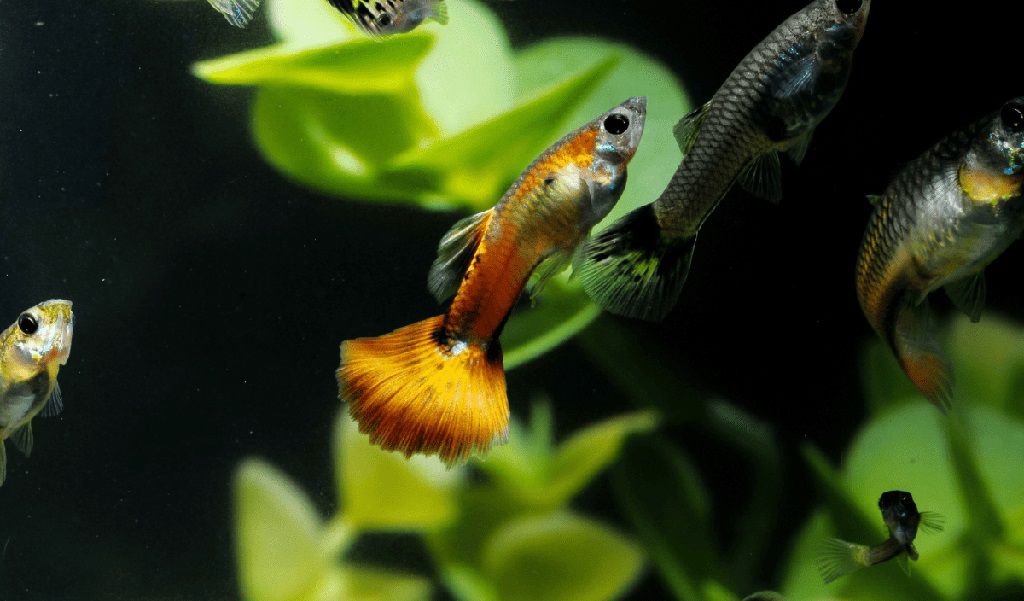
How Much Water is in a 30 gallons Fish Tank
A 30-gallon fish tank is a medium-sized tank, which is perfect for beginners and those who do not want to spend a lot of time on maintenance. In this part, we will discuss how much water for a 30-gallon fish tank and how much a 30-gallon fish tank weighs with water. As we have mentioned in another article – How to Calculate the Surface Area and Volume of a Fish Tank, the height of water capacity is usually 5 cm lower than the height of a fish tank.
Provided that your 30-gallon fish tank is 80 cm in length, 40 cm in width, and 35 cm in height. The weight of water capacity should be (80*40*30)/1000=96L, which is about 25 gallons. The weight of water is about 212lb. If it is a glass tank, an empty 30-gallon glass tank generally weighs about 45lb, therefore, the weight with water should be 262lb (212 lb+451b=257 lb). The standard live load of the residential floor is 2 KN per square meter, which means that it can stand for 200 KG of each square meter at the same time.
As a result, it is feasible to place the 30-gallon glass tank on residential floors. In addition to this, you can use a weighing machine to measure the accurate weight of your tank.
Some Good Centerpiece Fish to Stock a 30 Gallons Fish Tank
Since the number of fish is determined by the tank size and fish species, in this segment, we will cover some good centerpiece fish that can be kept in a 30 gallon fish tank.
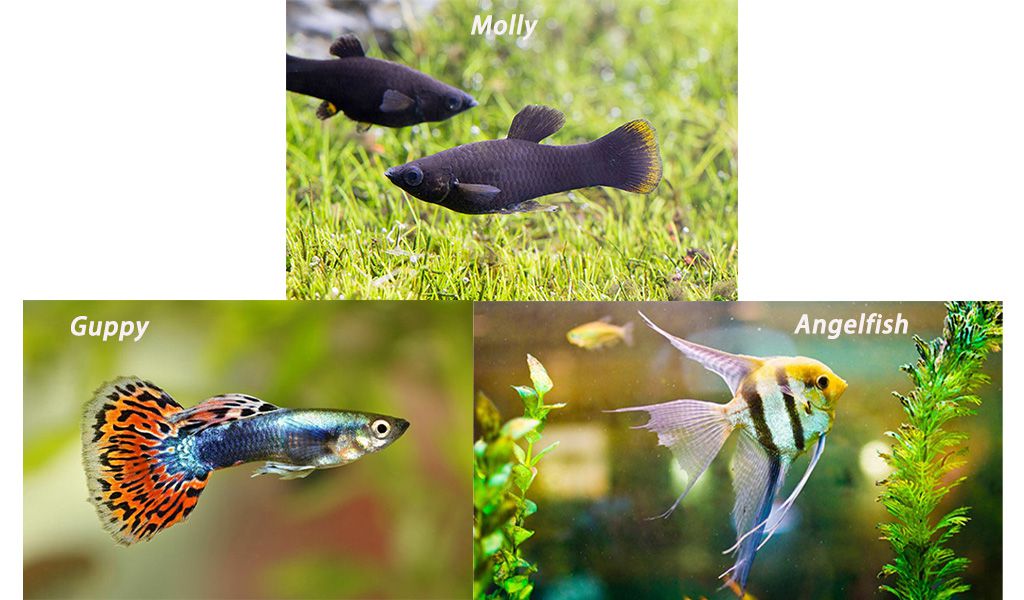
1. Guppy
Guppy is a freshwater fish from the Poeciliidae family. They are native to South America. Guppies are peaceful and easy to care for. They are varying from various colors and patterns, as well as different tail lengths and styles. Guppies can grow up to 0.6-2.4 inches and live for about 2 years. They can be kept in the minimum tank size of 5 gallons. Besides, they require a water temperature of 74-82℉.
2. Molly
Mollies are also one kind of freshwater fish, belonging to the Poeciliidae family. Mollies can be found in Mexico and the southern United States. They are peaceful and an excellent choice for a community tank. In addition, they are easy to care for and possess great adaptability, which makes them suitable for beginners. Mollies include black molly, lyretail molly, balloon molly, sailfin molly, and Dalmatian molly. They need to be kept in a 10-gallon tank at least. And they can grow up to 3.5-4.5 inches, while they can live for 3–5 years. Furthermore, 72-78℉ is ideal for them.
3. Angelfish
Angelfish is one popular freshwater fish, which belongs to the Cichlidae family. There are freshwater angelfish and saltwater angelfish. Angelfish like slow-moving streams and swamps, as well as warm and acidic water. Freshwater angelfish are semi-aggressive and omnivores. They can grow up to 6–8 inches. Thus, it is better to keep the fish in a 20-gallon tank at least. If you are interested in the compatibility between angelfish and coral, please read another article – Angelfish for Reef Tanks.
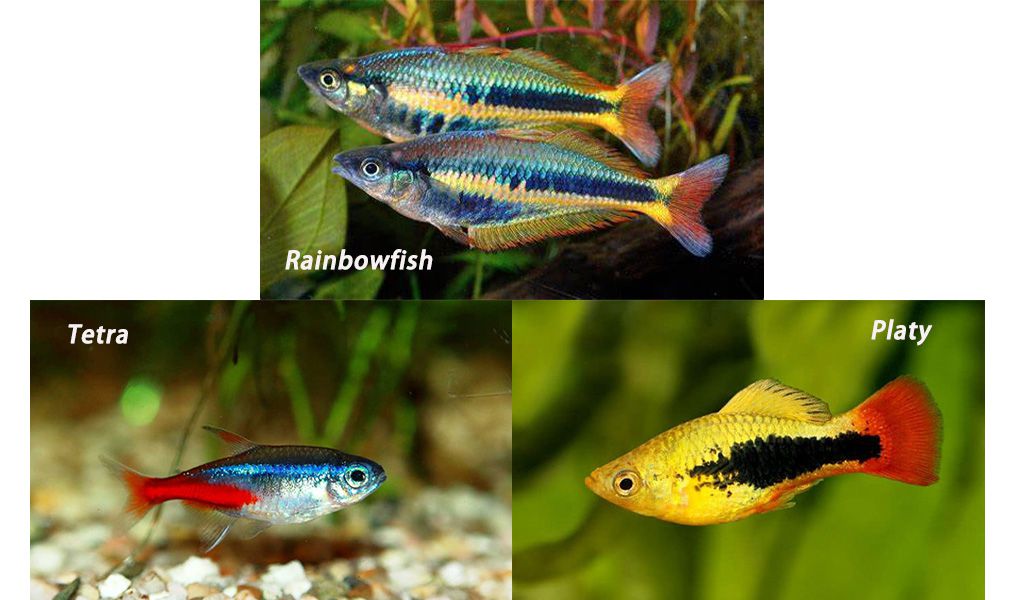
4. Tetra
There are many types of tetra, such as black tetra, neon tetra, flame tetra, and blue tetra. Most tetras can grow up to 1–5 inches and can be kept in 10-20 gallon aquariums. They prefer a water temperature of 75-80℉. Moreover, it is recommended to leave two gallons for each tetra.
5. Platy
Platies are freshwater fish from the Poeciliidae family. They are native to Mexico and Central America. Platies are peaceful and easy to care for. They accept the minimum tank size of 10 gallons. With proper care, they can reach 3 inches and live for 2–3 years. Besides that, platies are also one great option for 30-gallon community fish tanks.
6. Rainbowfish
Rainbowfish is one freshwater fish that belongs to the Melanotaeniidae family. They come from Australia, Indonesia, and Madagascar. The fish are colorful and bright. They can grow up to 3–7 inches and live for 5–8 years. Accordingly, the minimum tank size should be 15–30 gallons. Rainbowfish enjoy a water temperature of 74-80℉.
How Many Fish Can Be Put in a 30-gallon Water Tank
Someone holds that 5 freshwater fish in a 30-gallon fish tank is acceptable. Nevertheless, if there are aquatic plants and decorations, the fish number should be less accordingly. Because it is crucial to leave room for fish to swim and explore around the tank. You can take a reference from the 30 gallon fish tank stocking ideas.
| The fish name | Stock in a 30-gallon tank |
| Guppy | 10-12 |
| Molly | 4-6 |
| Angelfish | 1-2 |
| Tetra | 10-12 |
| Platy | 6-8 |
| Cory catfish | 9-11 |
| Bristlenose plecos | 3-5 |
| Cherry barbs | 10-12 |
| Rainbowfish | 3-5 |
| Killifish | 6-9 |
| Kuhli loach | 7-9 |
Tips
Setting up a 30-gallon fish tank costs less and is easier to maintain compared with large tanks. Although it is easy to set up the 30-gallon fish tank, here are also some tips for you!
The placement of your fish tank
You should avoid direct sunlight on the fish tank because it will lead to algae thriving. On the other hand, you should leave rooms around the fish tank, which will be convenient for you to do tank maintenance.
Set up your fish tank
You should clean the gravel and aquarium soil before adding them to the tank. Moreover, you should prepare aquarium light, aquarium heater, aquarium filter, and other aquarium accessories in advance.
Stock your tank
If you plan to add plants, it is better to apply live aquatic plants. Because fake ones may contain pigment, which may have negative effects on your fish. On the contrary, live plants can improve the oxygen level and some can also provide shade and hiding places for fish. But if you prefer fake plants, soft ones are better, silk plants for example.
Related Topic:
How Many Fish in A 5 Gallon Tank
How Many Fish in a 20 Gallon Tank
After reading this, hope you have gained some useful information. What are your ideas about stocking a 30-gallon fish tank? Welcome to share them with us in the comments. Finally, thanks for your reading!
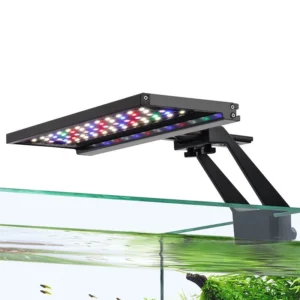
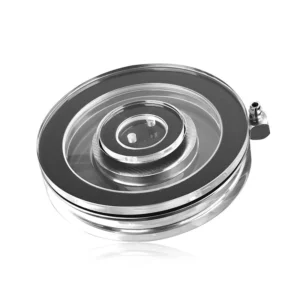
Leave a comment